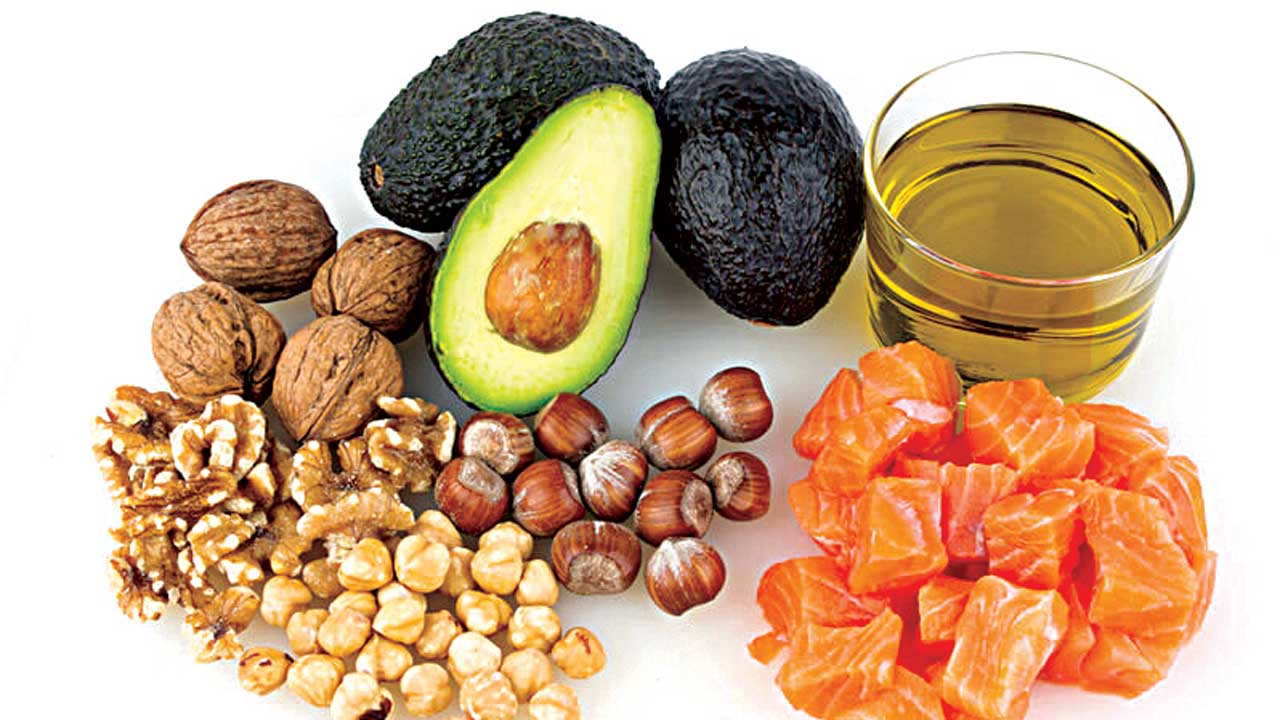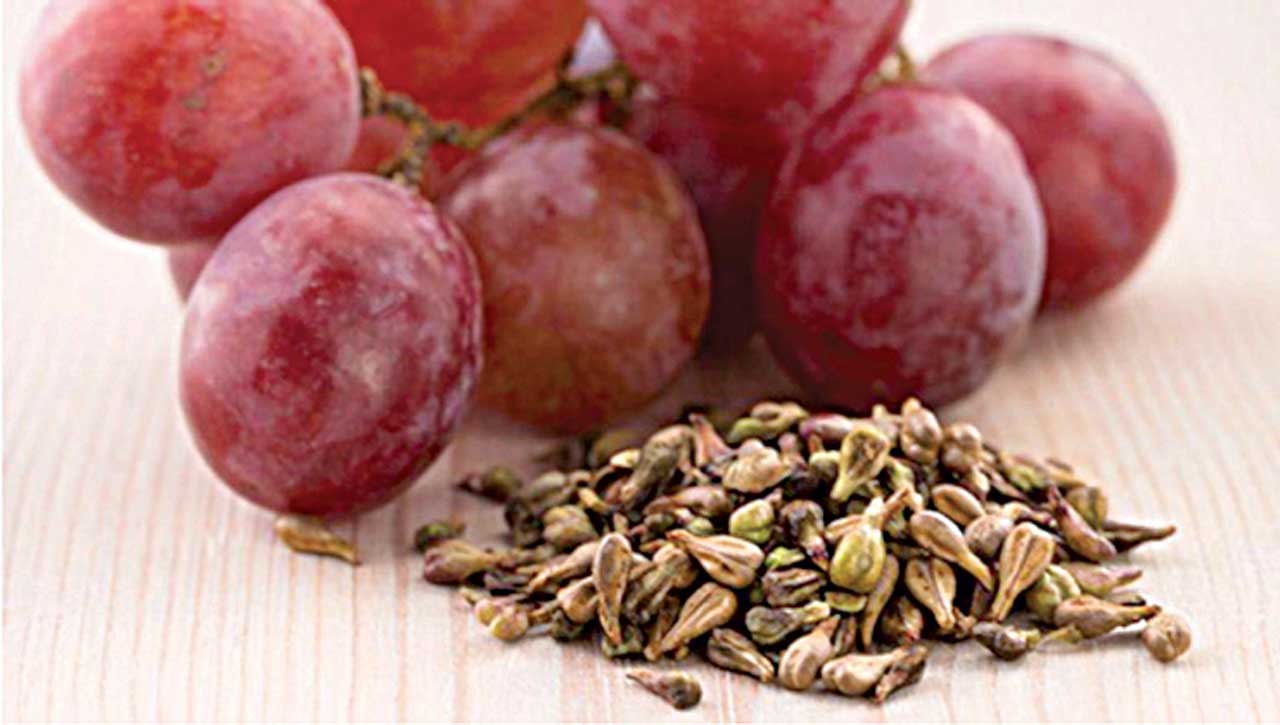
Can humans live forever, free from pains and diseases? Interestingly, scientists have recorded major breakthroughs toward making humans live longer and in optimal health.
Top on the list of novel findings are: Grape seed extract reverses ageing in mice; plant-based diet rich in dark, leafy vegetables could reduce effects of migraine; leaves of small Samoan tree could be as effective at treating fever and pain as Ibuprofen; diet rich in plant products reduces the risk of cognitive impairment and dementia in the elderly; regularly consuming fish may protect brain health; consuming lots of red or processed meat may raise chance of a stroke but regularly cooking with olive oil lowers the risk; diet rich in herbs and spices may reduce blood pressure in people at risk of cardiovascular disease; and intermittent fasting may help you live longer
Indeed, ageing is a key risk factor for a range of health issues. This is due, in part, to the buildup of senescent cells in a person’s body.
In recent years, scientists have identified a class of drugs called senolytics. These can destroy senescent cells in laboratory and animal experiments.
In the recent study, the researchers identified a component of grape seed extract as a potentially effective senolytic, and they used it to extend the life span and healthspan of mice.
In a new study, researchers identified a new drug based on a component of grape seed extract that has successfully extended the life span and health span of mice.
The research, published in the journal Nature Metabolism, laid the groundwork for further clinical studies to determine whether or not the effects may be reproducible in humans.
Ageing is a key risk factor for many chronic conditions. Scientists believe that this is due, in part, to cellular senescence. This occurs when a cell ceases to be able to fulfill its biological function in a person’s body.
In recent years, researchers have identified a class of drugs called senolytics. These drugs can destroy senescent cells in the laboratory and in animal models, potentially reducing the number of chronic conditions that occur with age and an increasing life span.
In the study, the scientists identified a new senolytic derived from a component of grape seed extract, known as procyanidin C1 (PCC1).
Based on previously available data, PCC1 showed promise at inhibiting the effects of senescent cells when administered at low concentrations and selectively destroying senescent cells at higher concentrations.
To test the effects of PCC1 on ageing, the researchers developed three experiments involving mice.
In the first experiment, they exposed mice to a sub-lethal dose of radiation to induce cellular senescence. One group of mice then received PCC1, while the other group received the vehicle that carried the PCC1.
The researchers found that after the mice underwent irradiation, they developed abnormal body features, including significant amounts of gray hair.
Treating the mice with PCC1 significantly reversed these features. The mice that received PCC1 also had fewer senescent cells and fewer biomarkers associated with senescent cells.
Finally, the irradiated mice had worse exercise capacity and muscle strength. However, the mice that received PCC1 saw this reversed and had better survival rates.
In the second experiment, the researchers treated older mice with either PCC1 or a vehicle every two weeks for four months.
The team found a significant number of senescent cells in the kidneys, livers, lungs, and prostates of the aged mice. However, PCC1 treatment reversed this.
The PCC1-treated mice also had improved grip strength, maximum walking speed, hanging endurance, treadmill endurance, daily activity levels, and balance, compared with the mice that only received the vehicle.
In the third experiment, the researchers looked at very old mice to see what effect PCC1 may have on the longevity of the mice.
They found that mice treated with PCC1 lived, on average, 9.4 per cent longer across their lifetime than mice that received the vehicle.
This equated to a 64.2 per cent extended life span following the treatment.
Furthermore, despite living longer, the PCC1-treated mice did not have any greater age-related morbidity than the mice that received the vehicle.
Summing up the findings, corresponding study author Prof. Yu Sun — of the Shanghai Institute of Nutrition and Health in China — and colleagues said: “We hereby present proof-of-principle evidence that, even when administered in late life, [PCC1] holds prominent potential to remarkably delay age-related dysfunction, reduce age-related diseases, and enhance health conditions, thus providing a new avenue to improve health span and life span in future geriatric medicine.”
Also, a diet rich in plant products reduces the risk of cognitive impairment and dementia in the elderly. This is the result of a study by the Biomarkers and Nutritional Food Metabolomics Research Group of the Faculty of Pharmacy and Food Sciences of the University of Barcelona (UB) and the CIBER on Frailty and Healthy Aging (CIBERFES).
The paper, published in the journal Molecular Nutrition and Food Research, is led by Cristina Andrés-Lacueva, professor at the Faculty of Pharmacy and Food Sciences and head of the Biomarkers and Nutritional Metabolomics of Food Research Group of the UB and the Biomedical Research Network Center in Frailty and Healthy Aging (CIBERFES), which is also part of the Food Innovation Network of Catalonia (XIA).
This European study, part of the Joint Programming Initiative “A Healthy Diet for a Healthy Life” (JPI HDHL), was carried out over 12 years with the participation of 842 people aged over 65 in the Bordeaux and Dijon regions (France).
The study analyses the relationship between the metabolism of dietary components, intestinal microbiota, endogenous metabolism and cognitive impairment. As Mireia Urpí-Sardà, from the Department of Nutrition, Food Science and Gastronomy and CIBERFES, notes, “what we analysed in the cohorts under study is the modulating role of the diet in the risk of suffering cognitive impairment.” Urpí-Sardà points out that “the results show a significant association between these processes and certain metabolites.”
The results reveal a protective association between metabolites derived from cocoa, coffee, mushrooms and red wine, microbial metabolism of polyphenol-rich foods (apple, cocoa, green tea, blueberries, oranges or pomegranates) and cognitive impairment in the elderly.
Therefore, changes in lifestyle and diet are decisive as a strategy to prevent cognitive deterioration and its progression in neurodegenerative diseases such as Alzheimer’s and other dementias. “A higher intake of fruits, vegetables and plant-based foods provides polyphenols and other bioactive compounds that could help reduce the risk of cognitive decline due to ageing.”
Meanwhile, a recent case report describes how one person achieved long-term migraine relief and needed less medication by following a diet that included more dark, leafy greens.
The authors of the report conclude that the whole food, plant-based diet may have these effects by increasing beta carotenoid levels or helping people whose migraine does not respond to medication identify potential triggers.
Migraine ranks second among the causes of global disability. In young women, specifically, it is the leading cause.
In the United States (U.S.) alone, over 40 million people have this often-disabling neurological disorder. Still, treatment options are limited, and conventional approaches may not always lead to dramatic improvement.
This was true for a 60-year-old man who lived with migraine episodes for 12 years. His migraine became chronic 6 months before he saw the authors of a recent case study published in the British Medical Journal (BMJ).
The man had already received standard treatment, eliminated known triggers from his diet, and engaged in stress reduction techniques, such as meditation and yoga. These failed to improve his symptoms.
Then, as part of a study on the links between diet and migraine, he switched to a plant-based diet called the Low Inflammatory Foods Everyday (LIFE) diet.
After a few weeks, the man experienced remarkable relief from his severe, frequent migraine episodes.
His case represents the longest that migraine has gone into remission solely as a result of dietary intervention, the authors of the report believe.
They conclude that while more research is necessary, a plant-based, whole food diet could represent a migraine treatment.
Current therapy involves medication and avoiding triggers. Many diets may help, including a low glycemic diet, ketogenic diet, and low fat diet.
Senior author of the study, Dr. David Dunaief, lead author, Dr. Brittany Perzia, and a contributing author, Dr. Joshua Dunaief, investigated the benefits of the LIFE diet, which is especially rich in dark green leafy vegetables, which are essential sources of many vitamins, minerals, and antioxidants.
After switching to the LIFE diet, the person reported a dramatic reduction in the frequency of migraine episodes, down from 18–24 per month to one per month at his two-month follow-up appointment.
The relief he experienced was rapid, the researchers said.
“This patient was incapacitated by migraines on an almost daily basis, prior to starting the LIFE diet. At the two-month mark, the patient stopped his migraine medications. At three months, there was a complete cessation of migraines,” said Dunaief.
As part of the new diet, the man consumed one 32-ounce (oz)/907 grammes LIFE smoothie every day, which contains ingredients such as kale or spinach, blueberries, and flax seeds.
He also consumed 5 oz (142 grammes) of dark green leafy vegetables and limited the amount of whole grains, starchy vegetables, oils, dairy, and red meat he consumed daily.
The diet has been the subject of previous research, such as a study from 2019 and one from 2020.
After three months of considerable migraine relief, the man decided to add some foods and drinks back into his diet for a three-month trial period. He found that iced tea, salmon, and egg whites, staples of his previous diet, triggered moderate, short-lived headaches that aspirin could relieve.
Overall, since his switch to the LIFE diet, the man has remained migraine-free for seven years.
The researchers believe that the change may stem from carotenoids or beta carotene, which are abundant in dark green leafy vegetables. They also believe that the diet may have helped the man identify triggers.
Carotenoids and beta carotene are compounds that can reduce systemic inflammation and oxidative stress, which are implicated in migraine.
Though the man primarily had a plant-based diet rich in beta carotenes before adopting the LIFE diet — eating sweet potato daily — he still experienced severe migraine.
The 2019 and 2020 investigations into the LIFE diet, which included the same authors, among others, found significantly reduced C-reactive protein (CRP) levels in people who tried the diet.
The higher the level of CRP, the more inflammation in the body, and greater the risk of related diseases, which may be rheumatologic or cardiac, for example.
The authors of the present report found that the man’s CRP levels remained largely stable, which they believe reflect the fact that he had already had a healthy, mostly plant-based diet.
The team instead focused on raising his levels of plant nutrients, or phytonutrients.
Also, regularly consuming fish may protect against vascular brain disease. Cerebrovascular disease or vascular brain disease, which impacts the blood vessels in the brain, is the fifth leading cause of death in the United States.
Health experts associate fish consumption with a lower risk of cerebrovascular disease and the accompanying decline in cognitive function.
A recent cross-sectional study found a link between higher fish intake and lower levels of markers for vascular brain damage in healthy older adults, especially those aged 65–74 years.
The effect of consuming fish two–three times per week on cerebrovascular disease-associated brain markers was similar in magnitude to the effect of high blood pressure, which was associated with increased vascular brain damage.
Cerebrovascular disease, or vascular brain disease, refers to multiple conditions that affect the blood vessels and blood circulation in the brain, such as stroke and vascular malformation.
In addition to causing physical disability, cerebrovascular diseases can result in the development and progression of cognitive impairment and dementia.
Moreover, health experts also associate subclinical cerebrovascular damage — that is, brain abnormalities observed in the early stages of the cerebrovascular disease before its symptoms become evident — with an increased risk of dementia.
Healthy lifestyle modifications, including making dietary changes, increasing physical activity levels, and quitting smoking, can reduce the risk of cerebrovascular disease.
For instance, there is a relation between higher intake of fish and a lower risk of stroke. Fish are an excellent source of omega-3 polyunsaturated fatty acids, which may mediate these benefits on cerebrovascular health.
However, the evidence that fish consumption reduces vascular brain damage before the onset of the cerebrovascular disease is mixed.
A recent cross-sectional study investigated the link between fish consumption and vascular brain damage in healthy older adults before cerebrovascular disease onset.
The study reports an association between eating fish two or more times per week and lower levels of brain abnormalities related to vascular brain damage, especially in individuals under the age of 75 years.
The study’s senior author, Dr. Cecilia Samieri, a senior researcher at the University of Bordeaux in France, explains: “Our results are exciting because they show something as simple as eating two or more servings of fish each week is associated with fewer brain lesions and other markers of vascular brain damage, long before obvious signs of dementia appear. However, eating that much fish did not have a protective effect in people 75 years of age and older.”
The study was published in the journal Neurology.
Also, leaves of small Samoan tree could be as effective at treating fever and pain as ibuprofen.
Psychotria insularum is an indigenous Samoan tree that has been used by healers for medicinal purposes for hundreds of years
Scientists analysed the leaves by breaking them down into a juice. They found the leaves have anti-inflammatory effects that are as potent as over-thee-counter ibuprofen. The plant also has the potential to treat cancer, neurodegenerative diseases, diabetes, cardiovascular diseases as well as the coronavirus.
The leaves of an indigenous Samoan plant used to treat fevers, body aches and ‘ghost sickness’ – a belief of being possessed – may be just as effective as ibuprofen.
The tree, known as Psychotria insularum or matalafi by locals, stands about six feet high with small white flowers and glossy red berries mixed in with large green leaves.
The leaves have long been used in Samoan traditional medicine to treat inflammation-associated illnesses by interacting with the iron within the body’s cells.
A team of scientist led by Victoria University of Wellington in New Zealand found its anti-inflammatory effects are as potent as those found in the over-the-counter drug.
It also has the potential to treat cancer, neurodegenerative diseases, diabetes, cardiovascular diseases as well as COVID-19.

For hundreds of years, natives of Samoa, an island in the South Pacific, have been using the leaves of the matalafi tree to treat a wide variety of inflammation related ailments, but now scientists have taken a deeper look to better understand how the treatment works.
The natural treatment made by traditional healers was done by chopping up and juicing the leaves, but sometimes the leaves are left whole and applied to a wound.
Along with colleagues, Seeseei Molimau-Samasoni, the study’s author and the manager of the plants and postharvest technologies division at the Scientific Research Organization of Samoa, found the plant is an iron chelator, which means it binds easily to iron.
“Matalafi is used in two ways in Samoa—to treat illnesses attributed to ghosts, and to treat various forms of inflammation,” Molimau-Samasoni said in a statement.
Iron chelators may also have the power to treat iron overload from blood transfusions, and have also been identified as prospective agents against common diseases like cancer, neurodegenerative diseases, cardiovascular diseases, and diabetes, according the researchers.
Researcher at the Victoria University of Wellington, Dr. Helen Woolner, said in a statement: “This raises the possibility for applications of matalafi beyond traditional use.”
Two of the primary bioactive compounds in matalafi were also noted in the study: rutin and nicotiflorin.
Both compounds have previously been found to have anti-inflammatory and neuroprotective effects.
However, the researchers not that they need to conduct a further chemical investigation of the Psychotria insularum plant, “as there are potentially undiscovered compounds in the mix that could contribute to the overall medicinal effects of matalafi,” the team shared in the press release.
The study was published in the Proceedings of the National Academy of Sciences of the USA.
Also, a study led by researchers at the University of Gothenburg showed, both moderate and strenuous exercises alleviate symptoms of anxiety, even when the disorder is chronic.
The study, now published in the Journal of Affective Disorders, is based on 286 patients with anxiety syndrome, recruited from primary care services in Gothenburg and the northern part of Halland County. Half of the patients had lived with anxiety for at least ten years. Their average age was 39 years, and 70 percent were women.
Through drawing of lots, participants were assigned to group exercise sessions, either moderate or strenuous, for 12 weeks. The results show that their anxiety symptoms were significantly alleviated even when the anxiety was a chronic condition, compared with a control group who received advice on physical activity according to public health recommendations.
Most individuals in the treatment groups went from a baseline level of moderate to high anxiety to a low anxiety level after the 12-week programme. For those who exercised at relatively low intensity, the chance of improvement in terms of anxiety symptoms rose by a factor of 3.62. The corresponding factor for those who exercised at higher intensity was 4.88. Participants had no knowledge of the physical training or counseling people outside their own group were receiving.
Previous studies of physical exercise in depression have shown clear symptom improvements. However, a clear picture of how people with anxiety are affected by exercise has been lacking up to now. The present study is described as one of the largest to date.
Both treatment groups had 60-minute training sessions three times a week, under a physical therapist’s guidance. The sessions included both cardio (aerobic) and strength training. A warmup was followed by circle training around 12 stations for 45 minutes, and sessions ended with cool down and stretching.
Members of the group that exercised at a moderate level were intended to reach some 60 percent of their maximum heart rate — a degree of exertion rated as light or moderate. In the group that trained more intensively, the aim was to attain 75 percent of maximum heart rate, and this degree of exertion was perceived as high.
The levels were regularly validated using the Borg scale, an established rating scale for perceived physical exertion, and confirmed with heart rate monitors.
Today’s standard treatments for anxiety are cognitive behavioral therapy (CBT) and psychotropic drugs. However, these drugs commonly have side effects, and patients with anxiety disorders frequently do not respond to medical treatment. Long waiting times for CBT can also worsen the prognosis.
Meanwhile, leading a healthy lifestyle can significantly reduce the risk of heart disease and stroke. For instance, an older study suggests that maintaining an overall healthy lifestyle can reduce the risk of stroke by 80 per cent. The study considered lifestyle factors, such as adhering to a healthy diet, doing physical exercise, not smoking, moderate alcohol consumption, and maintaining an optimal weight.
Although a healthy diet is a vital component of prevention strategies for stroke and other cardiovascular diseases, only 22 per cent of individuals in the U.S. follow the American Heart Association’s (AHA) recommendations for a healthy diet.
Dietary advice for reducing the risk of stroke generally includes consuming a high fiber diet rich in vegetables, fruits, nuts, legumes, whole grains, poultry, and fish, while restricting the intake of carbohydrates, salt, and red meat. For a considerable period, advice for stroke prevention also included reducing the consumption of fats.
In recent times, however, researchers have recognised that consuming certain types of fats and the total fat intake may influence the risk of stroke.
Multiple studies investigating the association between the intake of different fat types, such as polyunsaturated and saturated fat, and the risk of stroke have yielded inconsistent results. Moreover, few studies have examined how fat from different food sources, such as dairy, meat, etc., is associated with an increased risk of stroke.
A group of researchers at the Harvard T.H. Chan School of Public Health recently investigated the association between different fat types and sources and the risk of stroke.
The study’s author, Dr. Fenglei Wang, a post-doctoral researcher at Harvard University, MA, told Medical News Today: “We found that higher intake of vegetable fat and polyunsaturated fat was associated with lower stroke risk, while higher intake of non-dairy animal fat was associated with higher stroke risk. Our findings indicate the importance of considering the fat sources when examining the association between fat intake and stroke risk.”
“To our knowledge, our study is the first one that comprehensively examines the associations of total fat, various types of fat (saturated fat, monounsaturated fat, polyunsaturated fat, or trans fat), and fat from different food sources (vegetable, dairy, or non-dairy animal foods) with stroke risk,” added Wang.
The researchers then examined the relationship between fat from various food sources and stroke risk. They found that consuming red meat and processed red meat had associations with increased stroke risk, whereas vegetable oil intake was associated with lower risk.
Also, high-fat diet synergises with exposure to ‘forever chemicals’ or PFAS to change the metabolism of benign and malignant prostate cells.
Exposure to PFAS- a class of synthetic chemicals utilised in food wrappers, nonstick cookware and other products- reprograms the metabolism of benign and malignant human prostate cells to a more energy efficient state that enables the cells to proliferate at three times the rate of non-exposed cells, a new study in mice found.
However, consuming a high-fat diet significantly accelerated development of tumours in the PFAS-exposed mice, said the scientists at the University of Illinois Urbana-Champaign and the U. of I. Chicago who conducted the research. PFAS is an abbreviation for perfluoroalkyl and polyfluoroalkyl substances, often described as “forever chemicals” because they don’t degrade naturally and persist as environmental pollutants. Studies have associated PFAS with harmful effects in laboratory animals.
Previous studies, including some conducted in humans, linked PFAS with a range of serious health problems such as prostate cancer, the most common male cancer in the U.S.
Published in the journal Nutrients, the current study’s findings are believed to be the first to shed light on the synergistic interactions of PFAS and dietary fat and the metabolic changes that shift benign prostate cells to a malignant state, triggering rapidly growing tumours.
The scientists injected an aggressive form of malignant human prostate cells into the flanks of male mice that were fed either a high-fat diet intended to mimic the typical Western diet or a control diet. Some of the mice also received oral doses of perfluorooctane sulphonate (PFOS), one of the most common forms of PFAS that has been associated with various cancers.
Also, more researches have suggested consuming lots of red or processed meat may raise your chance of a stroke — but regularly cooking with olive oil lowers the risk.
Experts who tracked 100,000 people for three decades said results confirmed diets high in fat are not the problem.
Echoing dozens of similar studies, it instead pointed the blame at the specific types of fats consumed.
They found people who ate the most lard, red or processed meat were up to 16 per cent more likely to suffer a stroke than those who ate the least.
People who got most of their fat intake from dairy, like butter and cheese, were not at an increased risk, the study found.
Those who often cooked with olive, corn and soybean oils were 12 per cent less likely to have a stroke than those who ate the least amount of these types of fat.
Lead researcher Dr. Fenglei Wang, from the Harvard School of Public Health, said the findings suggest the type of fat people eat is more important for preventing a stroke than how much they eat.
Instead, fat from red and processed meats, as well as non-dairy animal fat, appear to increase the risk of stroke, while dairy and vegetable fat did not seem to increase the likelihood.
Experts have long warned that while red meat — such as beef, lamb and pork — is a good source of protein and vitamins, eating too much may also have health risks.
They believe the high amounts of saturated fat in the meat increases levels of harmful cholesterol, while salt raises blood pressure — both of which increase the risk of having a stroke.
And chemicals found in red meat — that are added during processing or produced when cooking — damage cells which can increase the risk of cancer.
The preliminary research was presented at the American Heart Association’s (AHA) Scientific Sessions and has not yet been published in a journal.
Also, intermittent fasting may help you livelonger. The 5:2 diet, a type of intermittent fasting, is no more effective than traditional approaches to weight loss, according to what researchers said was the first study of the regimen in a “real-life setting.”
However, the researchers found that the approach, which involves two days of heavily restricting calories (500 calories for women, 600 calories for men) and five days of sensible eating, was rated more highly by the obese people in the study because it was easy to follow.
“Here we’ve been able to provide the first results on the effectiveness of simple 5:2 diet advice in a real-life setting. We found that although the 5:2 diet wasn’t superior to traditional approaches in terms of weight loss, users preferred this approach, as it was simpler and more attractive,” said Katie Myers Smith, a chartered health psychologist and senior research fellow at Queen Mary University of London, in a news statement. She was an author of the study that published in the scientific journal PLOS ONE.
Doctors may want to consider including the 5:2 diet as part of their standard weight management advice to patients, she said.
Some experts think that alternating between fasting and eating can improve cellular health by triggering metabolic switching.
In metabolic switching, cells use up their fuel stores and convert fat to energy — “flipping a switch” from fat storing to fat saving. Intermittent fasting can reduce blood pressure, aid in weight loss, and improve longevity, a review of past animal and human studies published in The New England Journal of Medicine suggests.
The method is not appropriate for everyone, however, particularly pregnant women and those with medical conditions such as diabetes or eating disorders.
Meanwhile, a recent randomized controlled trial suggests that a diet rich in herbs and spices may reduce blood pressure in people at risk of cardiovascular disease.
High blood pressure, or hypertension, increases the risk of heart disease and stroke, both of which are leading causes of death.
Nutrition advice on how to lower blood pressure often includes using herbs and spices rather than salt to flavour meals. However, experts know little about the health benefits of herbs and spices.
Untreated hypertension increases the risk of cardiovascular disease, such as heart attack, stroke, heart failure, kidney disease, vision loss, and damage to blood vessels.
Dietary guidance on reducing blood pressure includes reducing salt intake. The Dietary Guidelines for Americans recommend using herbs and spices instead of salt to flavour food.
Experts know less about the health effects of herbs and spices than they do about those of salt. However, some studies have shown that herbs and spices can reduce lipemia — the excess of lipids in the blood — hyperglycemia, and oxidative stress.
To dig a little deeper, researchers at Pennsylvania State University recently conducted a randomized controlled trial investigating the effect of longer-term consumption of herbs and spices on risk factors for cardiovascular disease.
They found that a higher level of herbs and spices in food reduced 24-hour blood pressure readings.
The findings were published in the American Journal of Clinical Nutrition.
The researchers then randomly assigned the participants to one of three groups. Each group would eat one of three diets: a low spice diet, a moderately spiced diet, or a high spice diet. These diets included a daily intake of 0.5 grams (g), 3.3 g, and 6.6 g of herbs and spices, respectively.
The aim was to incorporate herbs and spices into a diet that was representative of the average U.S. diet. The additional herbs and spices included cinnamon, turmeric, and oregano.
The participants followed their respective diets for four weeks, with a two-week break in between. At the end of each diet period, the participants returned for follow-up assessments. A total of 63 individuals completed the study.
The study showed that the high spice diet tended to improve 24-hour blood pressure readings, compared with the medium and low spice diets.
The researchers did not observe any effect of the diets on low-density lipoprotein cholesterol, clinic-measured blood pressure, markers of glycemia, vascular function, or oxidative stress.
However, they say that 24-hour blood pressure readings are a stronger predictor of cardiovascular death than clinic blood pressure measurement.
The authors believe that the study might have been too short for vascular remodeling to occur, which might explain why they did not see any effect on arterial stiffness.
They also note that the dosages of herbs and spices might not be adequate to overturn the metabolic effects of an unhealthy background diet. Therefore, they cannot recommend increasing intake of herbs and spices alone in the context of a poor quality diet to lower the risk of cardiovascular disease.
Moreover, because each day of the menu included different amounts of the 24 herbs and spices, exposure was not consistent. As herbs and spices do not stay in the system for very long, the food consumed during the days closest to testing may have influenced the results more strongly.






